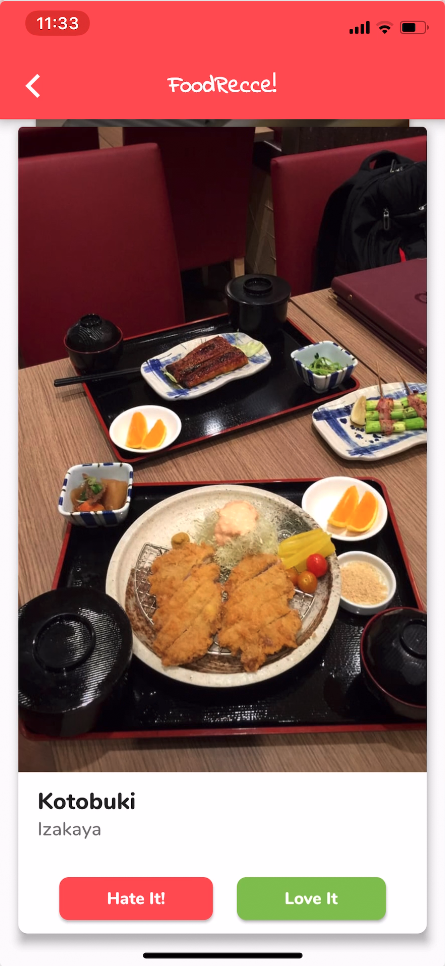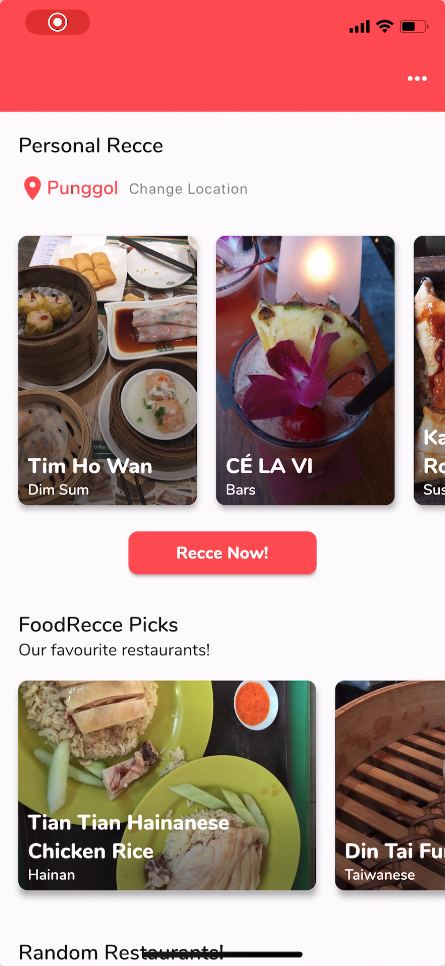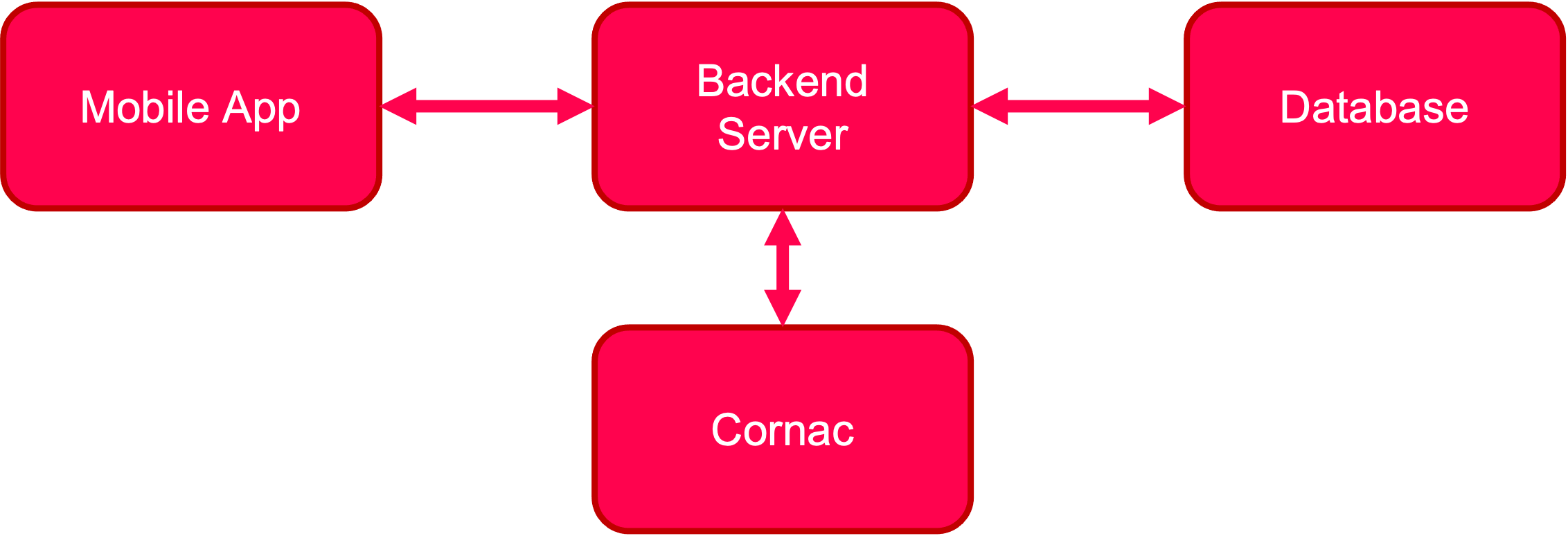FoodRecce Example#


FoodRecce (in short for Food Reconnaissance) is an application that allows users to search for food places around their current location.
FoodRecce is a mobile app that allows users to provide feedback (like/dislike) the restaurants they love or dislike. The feedback is then used to recommend other restaurants that the user may like.
FoodRecce Architecture

The above diagram shows the architecture of FoodRecce. The mobile app is connected to a backend server, which is connected to a database. The database stores the information of the restaurants, as well as the feedback provided by the users.
Training data#
Implicit data was collected by the users of FoodRecce. The data is in the form of user feedback on the restaurants. The feedback is in the form of like/dislike or in binary form, 1 or 0.
The data is being loaded from the database. A simple SQL statement
SELECT * FROM feedbacks could be used to obtain the feedback data on Python.
# Converted data as a list of UIR (user, item, rating) tuples
data = [
("uid_001", "restaurant_032", 1),
("uid_954", "restaurant_012", 0),
("uid_022", 'resturant_027', 1),
...
]
We then convert the data to the dataset format:
from cornac.data import Dataset
dataset = Dataset.from_uir(data, seed=123)
How the recommender was built#
We use the BPR recommender to build the recommendation system for FoodRecce. Based on historical data, we are able to rank other unseen restaurants based on the user’s past preferences.
Assuming that we have already experimented different parameters and values for the BPR model, we can then train the recommender system.
from cornac.models import BPR
bpr = BPR(k=10, max_iter=100, learning_rate=0.01, lambda_reg=0.001, seed=123)
bpr.fit(dataset)
# Save the model
bpr.save(save_dir="saved_models")
This in turn saves the model which we could reuse for future predictions. For the FoodRecce use case, we often retrain the model with new data as new restaurants are often added to the database, along with the increase of new users.
Note
While it may not be essential to save the model, it is good practice to do so. This is because we can then load the model directly from the saved directory without having to retrain the model again.
Providing feedback#
FoodRecce gives recommendations based on the trained model. We give users a mix of restaurants that they might not have seen before, as well as restaurants that they could have previously liked.

This swiping interface gives users the opportunity to further provide the system more ideas on what they may like or dislike. Depending on our scenario, this could be just random sampling of restaurants, or specifically ranked restaurants based on an algorithm on Cornac.
Giving recommendations#

After training the model, we can then use the model to make recommendations for users. We utilize a ranking strategy to provide recommendations.
You can easily do this by loading the model and calling the recommend
method.
We first load our saved model. For subsequent runs, we can load the model directly from the saved directory.
from cornac.models import BPR
bpr = BPR.load("saved_models/BPR")
Now, given that our backend receives a load request from a user with id
uid_001, we can then make recommendations for this user.
# variables are shown here for brevity
user_id = "uid_001"
top_k = 10
def get_recommendations(user_id, top_k):
# Get the top k recommendations for user with id user_id
top_k_recs = bpr.recommend(user_id=user_id, top_k=top_k)
return top_k_recs
For example, the values returned will be as follows;
[
'restaurant_038',
'restaurant_012',
'restaurant_027',
'restaurant_081',
'restaurant_002',
'restaurant_030',
'restaurant_104',
'restaurant_235',
'restaurant_006',
'restaurant_007'
]
Your backend server will then return the list of recommendations to the mobile app. Depending on how the interface is, the mobile app will then display the recommendations to the user.
In FoodRecce’s scenario, we display the recommendations in a format in which users could navigate and find out more about the restaurants. This is done with the integration of FoodRecce’s database of restaurants.
Updating the Model#
Over the months, many new restaurants and food establishments would have been introduced to the public. To keep the app relevant, we would need to retrain the model with the new data. With an data source, new restaurants are consistently added into the database, in which we would retrain the model to increase coverage of restaurants. Also, we periodically update the model to better capture users’ most recent preferences.
Conclusion#
We have just briefly shown you how to build a recommendation system for a food recommendation app. There are many uses for recommender systems.
There are various strategies in which you could use Cornac for, and we hope that you have learned how to use Cornac for your own projects and applications.
Feel free to try to building your own recommendation system for your own application, and share them with us!
What’s Next?#
Now that you have learned how to use Cornac for your own projects and applications, you can now start building your own recommendation systems using Cornac.
